- Joined
- Aug 4, 2013
- Messages
- 3,989
The BladeForums.com 2024 Traditional Knife is ready to order! See this thread for details:
https://www.bladeforums.com/threads/bladeforums-2024-traditional-knife.2003187/
Price is $300 $250 ea (shipped within CONUS). If you live outside the US, I will contact you after your order for extra shipping charges.
Order here: https://www.bladeforums.com/help/2024-traditional/ - Order as many as you like, we have plenty.
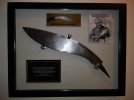
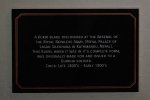

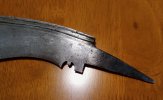
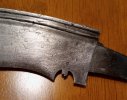
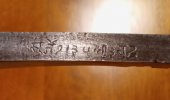
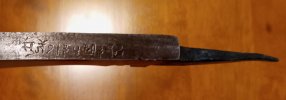
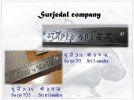

Nice, it never ceases to surprise me how, as a hard use chopper and general tool, the kukri has a such a short tang.This one just got a nice generous coating of Renaissance Wax.
The story on this Antique Nepalese Kukri blade, (which was from a Nepalese military issued Kukri knife), was a bit interesting.
I say interesting because I didn't buy it to rehandle it, but rather it was obtained for the sole purpose of displaying it as is.
I had just received my second complete Antique Nepalese Military Kukri, when I got the idea of also ordering myself an Antique Nepalese "Kukri knife blade only". They were selling for about 1/3 the price of the complete knives I had already purchased, and obviously being sold as an "as is" blade that one could in some way rehandle at home... Basically a "do it yourself" item.
Well, I had different intentions for it. I wanted to set it up as an educational display, exposing what a traditional Nepalese Kukri tang looks like when the handle is removed.
Anyhow, here's how I set up the display case for it...
View attachment 1893216View attachment 1893237
And here are some pictures of it after I Ren Waxed it today...
View attachment 1893217View attachment 1893218View attachment 1893219View attachment 1893220View attachment 1893221
It fit's right in with my 'Interesting Objects Collection'
Nice, it never ceases to surprise me how, as a hard use chopper and general tool, the kukri has a such a short tang.
very nice. Matt Easton has actually become my favorite youtuber. He is so knowledgeable about swords and knives. Lately he's been doing videos about antique bowie knives and some ww1 trench knives. Highly recommended.This one just got a nice generous coating of Renaissance Wax.
The story on this Antique Nepalese Kukri blade, (which was from a Nepalese military issued Kukri knife), was a bit interesting.
I say interesting because I didn't buy it to rehandle it, but rather it was obtained for the sole purpose of displaying it as is.
I had just received my second complete Antique Nepalese Military Kukri, when I got the idea of also ordering myself an Antique Nepalese "Kukri knife blade only". They were selling for about 1/3 the price of the complete knives I had already purchased, and obviously being sold as an "as is" blade that one could in some way rehandle at home... Basically a "do it yourself" item.
Well, I had different intentions for it. I wanted to set it up as an educational display, exposing what a traditional Nepalese Kukri tang looks like when the handle is removed.
Anyhow, here's how I set up the display case for it...
View attachment 1893216View attachment 1893237
And here are some pictures of it after I Ren Waxed it today...
View attachment 1893217View attachment 1893218View attachment 1893219View attachment 1893220View attachment 1893221
It fit's right in with my 'Interesting Objects Collection', it basically being my own little personal museum
The following video has a gentleman living in England that explains how this stash of Antique Nepalese military Kukri knives became available to the general public...
And here he shares his method of cleaning them, (my specimens actually received an even less invasive cleaning of it's dry greased gunk, since I wanted to totally preserve that "antique character"
Cool Kuk!!!!
So what runs out first. Knives or Renwax!!!!!!

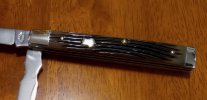
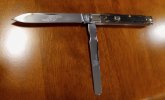
I am looking to replace the SOG Kukri I have and I really want to get the perfect blade curve and handle. The one in the glass case appears to be perfect for me! This was very helpful for me, thank you for posting these!
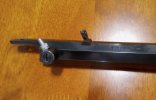
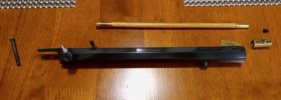
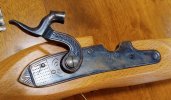

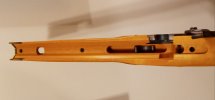

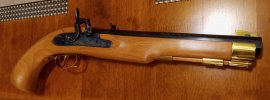
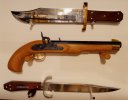
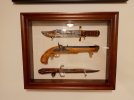
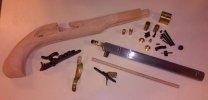
I very recently put up a post about a limited run WW2 reproduction KaBar that KaBar is currently offering. It has a purposely done distressed overall look to it, with Kabar using a "cold blue" solution to achieve the distressed look upon the blade of this model, (the model being named the 'Red Spacer' Kabar).
When I say cold blue solution, I mean that the method they are using to blue this model's blade, is to use a liquid chemical solution that most of you have no doubt seen being sold in small bottles at your local sporting goods or gun shop.
There are all sorts of brands of the stuff, but it's all chemically about the same.
Cold Bluing is not to be confused with the Bluing process that gun companies use to professionally blue their guns.
Cold bluing is much easier to apply, and hence the selling of the stuff at so many local stores, but it just isn't very durable at all. It takes very little to wear it off, MUCH easier to wear off than a professional grade "hot blued" finish. It's best use would be as a touch up on a hot blued steel surface.
So, the fact that KaBar is offering a cold blued steel blade knife, it got me to thinking about Renaissance Wax as an added protective coating on cold blued steel.
Although I have applied Ren Wax to a few of my blued blade knives, they have all been of the factory hot blued type.
Since I don't have a cold blued knife blade to test the Renaissance Wax upon, I decided to take a chance on my made in Spain .50 caliber 'Kentucky Belt Pistol' cap and ball muzzle loader, (.50 caliber usually gets a patched .490 caliber lead ball).
I received it as a gift from a friend some years ago, it still being in it's original box as a "build it yourself" CVA, (Connecticut Valley Arms), kit gun.
My friend had owned it for many years, it having been gifted to him by another friend that himself had received it as a gift, and after many, many years, had not taken on the project to build it.
It basically took a third owner, (me), to land in the hands of someone willing to take on the mission. I would say it stayed in kit form inside of it's original box for about 30+ years before finally being assembled.
It's assembly was started soon after my having received it. I went ahead and worked on the project during a two or so week period and got her fully assembled and finished.
I used a 'Watco' Golden Oak hand rubbed 'Danish Oil' finish for the wood stock, and since I was only planing on building it as a display piece, I chose to use the more delicate Cold Blue finish for it's barrel. Btw, the gun is actually a fully functional Black Powder Muzzle Loading Pistol.
Anyhow, so I decided today to give the Renaissance Wax a try on this gun, using it on the barrel, brass hardware, and on the hand rubbed finished wood stock.
It took me almost three hours to do everything, but the mission was accomplished.
The result was awesome, subtlety enhancing the look on everything I applied it to.
So, if you have a cold blued steel knife, gun, or other item, the Ren Wax should be safe to apply onto it.
View attachment 1899683View attachment 1899684View attachment 1899685View attachment 1899686View attachment 1899687View attachment 1899688View attachment 1899689View attachment 1899690View attachment 1899691
Here's what it started off as some years ago...
View attachment 1899725
These kits were not as easy to complete as they may seem to be... It took me quite a few man hours, (about 40 or so), to accomplish it
But, it was rewarding at the end
So, is it truly "made in Spain"?... I would say no... It's... Components made in Spain/Assembled and finished in USA


I have a couple of antique gun replicas from Spain that my grandfather gave me. Not much remains of one and the other one needs to have the trigger replaced. This is the one that needs the trigger. Idk how to go about fixing the other one.

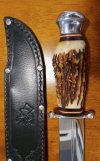
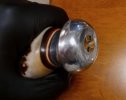
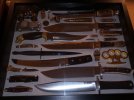
I received this vintage 'Romo' branded, Solingen Germany made, Bowie knife today, (my having ordered it a few days ago).
I'm guessing it was made during the 1960's/1970's period, but I can't be sure on that.
I went ahead and Ren Waxed everything... the blade, handle, and sheath.
Anyhow, I'm glad to have added this fixed blade pattern knife to my collection
View attachment 1901098View attachment 1901099View attachment 1901100
Wicked cool blade!!!
